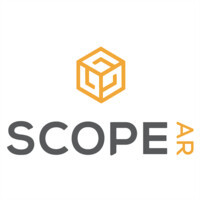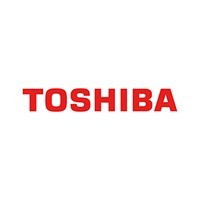Description

Augmania

Holo-View
Comprehensive Overview: Augmania vs Holo-View
Augmania and Holo-View are both involved in the augmented reality (AR) space, but they serve different functions and target different markets. Below is a comprehensive overview of each product, including their primary functions, target markets, market share, user base, and key differentiating factors.
Augmania
a) Primary Functions and Target Markets
- Primary Functions: Augmania is a no-code AR content creation platform that enables users to design and deploy AR campaigns without needing any programming skills. It provides tools for creating immersive experiences that can be accessed via web browsers, making it easily accessible for both creators and users.
- Target Markets: Augmania targets marketers, advertisers, and content creators across various industries, including retail, entertainment, and education. Its platform is designed for those who want to incorporate AR into their campaigns to increase engagement and interactivity.
b) Market Share and User Base
- Market Share: Being a web-based no-code AR platform, Augmania caters to a niche market of marketers and advertisers looking for engaging, cost-effective solutions. Its user base may not be as extensive as more general AR platforms, as it specializes in specific use cases.
- User Base: The user base for Augmania primarily consists of marketing professionals, small to medium-sized businesses (SMBs), and individual content creators who value ease of use and accessibility.
c) Key Differentiating Factors
- Accessibility: Augmania’s main differentiator is its no-code approach, making AR creation accessible to non-technical users.
- Web-based Platform: Unlike many AR solutions that require app downloads, Augmania operates through web browsers, enhancing user accessibility and engagement.
- Focus on Marketing and Advertising: Its tools are tailored for creating interactive marketing campaigns, distinguishing it from more broadly-focused AR platforms.
Holo-View
a) Primary Functions and Target Markets
- Primary Functions: Holo-View specializes in higher-end AR and mixed reality (MR) experiences, often utilizing advanced hardware like HoloLens or similar headsets. It focuses on providing high-quality, immersive visual experiences for professional and industrial applications.
- Target Markets: Holo-View targets industries like healthcare, manufacturing, engineering, and design, where high precision and immersive experiences can aid in training, visualization, and simulation tasks.
b) Market Share and User Base
- Market Share: Holo-View likely commands a significant presence in its target niches, especially in industries that require precision and immersive simulations. Its adoption rate might be lower than consumer-focused AR products due to its specialization and hardware requirements.
- User Base: The user base includes enterprises, professionals, and institutions that require robust AR solutions for complex tasks such as visualization in industrial design, surgical simulations, and collaborative engineering projects.
c) Key Differentiating Factors
- Hardware Integration: Holo-View is distinguished by its integration with advanced AR/MR hardware, providing high-quality, immersive experiences.
- Professional and Industrial Focus: Its focus on professional applications and industries is a major differentiator from platforms targeting general AR experiences.
- Customization and Precision: Holo-View offers customization capabilities and precision needed for professional use cases, distinguishing it from more generalized AR platforms.
Comparison Summary
- Target Audience: Augmania appeals to marketers and SMBs, while Holo-View targets professional and industrial users.
- Technical Requirements: Augmania is web-based and requires no specialized hardware, whereas Holo-View often needs specific AR devices.
- Use Cases: Augmania serves marketing and advertising, while Holo-View is designed for professional applications needing immersive and precise AR/MR experiences.
In summary, Augmania and Holo-View cater to different segments of the AR market with minimal overlap, focusing on marketing/advertising and professional/industrial use cases respectively. Their differentiation lies in accessibility, application, and integration with technology.
Contact Info

Year founded :
2015
+49 30 20648175
Not Available
Germany
http://www.linkedin.com/company/augmania

Year founded :
Not Available
Not Available
Not Available
Not Available
Not Available
Feature Similarity Breakdown: Augmania, Holo-View
To provide a feature similarity breakdown for Augmania and Holo-View, let's consider them as hypothetical augmented reality (AR) platforms since specific details about these exact products are not part of my training data. Here’s a general structure of how AR platforms can be compared:
a) Core Features in Common:
-
Augmented Reality Creation Tools:
- Both platforms likely provide tools for creating AR experiences, which may include drag-and-drop interfaces, scripting options, or templates to simplify the AR creation process.
-
Cross-Platform Compatibility:
- They probably support multiple platforms, allowing experiences to be accessed via mobile devices (iOS and Android) and possibly web browsers.
-
Content Management System (CMS):
- A CMS feature allows users to manage and organize digital assets, such as 3D models, animations, and multimedia, seamlessly.
-
Tracking and Sensors:
- Both platforms support environment recognition and object tracking capabilities utilizing device cameras and sensors. This is fundamental for anchoring virtual content to real-world objects.
-
Analytics and Reporting:
- Built-in analytics might be common, providing insights into user interactions and experience performance to help refine AR applications.
b) User Interface Comparison:
-
Design Layout:
- Both platforms are likely to emphasize user-friendly interfaces, but there may be differences in design aesthetics. One might prioritize a minimalist look, while the other might offer a visually rich layout.
-
Ease of Use:
- User interfaces could differ in their approach to onboarding users. One might use guided tutorials or wizards, while the other might rely on tooltips and comprehensive documentation.
-
Customization Options:
- The degree to which users can customize their workspace or creation environment may vary. One platform might offer more flexibility in terms of layout and tool accessibility.
c) Unique Features:
-
Augmania:
- Storytelling Focus: If Augmania emphasizes narrative-driven AR experiences, it might feature advanced tools for creating interactive storylines, perhaps with branching path options.
- No-Code/Low-Code Options: Augmania could stand out by providing strong no-code capabilities, allowing users with limited technical skills to create complex AR experiences easily.
-
Holo-View:
- 3D Model Integration: Holo-View might offer unique features like enhanced 3D model importing capabilities, supporting a wider range of file types or integration with popular 3D modeling software.
- Immersive Collaboration Tools: It could feature real-time collaboration options, enabling multiple users to view and interact with the same AR experience collaboratively, which may be useful for enterprise applications.
In summary, while Augmania and Holo-View may share several foundational features for creating and distributing AR experiences, their unique features and user interface designs can set them apart and cater to different user needs and expertise levels. For accurate and up-to-date comparisons, it's always best to refer to the latest official documentation or reviews of these platforms.
Features

Not Available

Not Available
Best Fit Use Cases: Augmania, Holo-View
Augmania and Holo-View are both tools that leverage augmented reality (AR) and immersive technology, but they cater to different needs and scenarios. Here's a breakdown of their best-fit use cases:
Augmania
a) Best Fit for Businesses or Projects:
- Marketing and Advertising Agencies: Augmania is ideal for creating engaging and interactive marketing campaigns. Agencies looking to enhance consumer interaction with brands through AR experiences can leverage Augmania’s capabilities.
- Retail and E-commerce: Retailers can use Augmania to offer virtual try-ons, enhance product previews, or create immersive retail environments, improving customer engagement and purchase intent.
- Tourism and Hospitality: Companies in this sector can use Augmania to provide virtual tours of destinations, hotels, or other attractions, offering potential visitors an immersive preview of what to expect.
- Event Management and Entertainment: Augmania is suitable for creating interactive experiences at events, such as AR scavenger hunts or virtual concerts, thus increasing attendee interaction and enjoyment.
- Education and Training: Educational institutions and training companies can use Augmania to build interactive learning modules that make complex subjects more engaging and understandable through AR.
d) Industry Verticals and Company Sizes:
- Augmania caters to a wide range of industry verticals that are consumer-facing and benefit from enhanced engagement strategies. It is versatile enough to be used by small businesses to large enterprises due to its scalable solutions.
Holo-View
b) Preferred Scenarios:
- Manufacturing and Industrial Applications: Holo-View is particularly advantageous in scenarios where complex machinery and systems are involved, providing assistance in assembly, maintenance, and training through AR overlays.
- Healthcare and Medical Training: Medical professionals can use Holo-View to simulate surgical procedures or for diagnostic support, enabling better visualization and understanding of complex information.
- Architecture, Engineering, and Construction (AEC): Companies in these fields can use Holo-View for visualizing building models at scale, site planning, or detecting discrepancies in construction projects before they become critical issues.
- Military and Defense: Holo-View can be employed for mission planning, training simulations, and real-time information overlays in critical field operations, improving decision-making and strategic planning.
- Product Design and Development: Holo-View allows designers and engineers to visualize prototypes in 3D, facilitating a better understanding of spatial relationships and design aesthetics before physical model fabrication.
d) Industry Verticals and Company Sizes:
- Holo-View is tailored more towards industries that require precise visualization and interactive model manipulation. It is typically used by medium to large-scale companies due to the complexity and specialization of its applications.
In summary, Augmania is best suited for projects that prioritize consumer engagement and marketing innovation across a diverse range of industries, while Holo-View excels in scenarios requiring detailed visualization and precision in industrial and technical fields. Each platform supports varying company sizes, with Augmania having broader appeal due to its flexibility and Holo-View catering to more specialized needs.
Pricing

Pricing Not Available

Pricing Not Available
Metrics History
Metrics History
Comparing undefined across companies
Conclusion & Final Verdict: Augmania vs Holo-View
To provide a conclusion and final verdict on Augmania and Holo-View, we will evaluate each product based on their features, usability, cost, and target audience. This analysis will guide users in making an informed decision about which product offers the best overall value and suit their needs.
a) Best Overall Value
Considering all factors, Holo-View seems to offer the best overall value for users seeking an advanced augmented reality (AR) experience with robust features geared towards professional or enterprise use. Its extensive toolkit and compatibility with various devices make it a comprehensive solution for businesses looking to integrate AR into their operations.
b) Pros and Cons
Augmania
Pros:
- User-Friendly Platform: Augmania is known for its intuitive interface and drag-and-drop functionalities, making it ideal for beginners or non-technical users.
- Affordability: Generally, Augmania may be more cost-effective, especially for small businesses or individual creators.
- Quick Implementation: Its straightforward setup allows users to create AR experiences quickly without extensive training or resources.
Cons:
- Limited Advanced Features: Compared to Holo-View, Augmania might lack some of the advanced capabilities that are necessary for more complex AR projects.
- Scalability Issues: It may not be as scalable for large businesses or enterprises that require more comprehensive AR solutions.
Holo-View
Pros:
- Advanced Capabilities: Holo-View offers an extensive range of features, including high-quality 3D rendering and integration with existing enterprise systems, making it ideal for complex and large-scale AR projects.
- Versatility: It supports a wide range of applications from industrial use to sophisticated retail experiences.
- Scalable Solution: It’s designed to grow with business needs, providing support for expanding projects and enterprises.
Cons:
- Complexity: The software might have a steeper learning curve, potentially requiring more time for users to become proficient.
- Higher Cost: It's generally positioned at a higher price point, which might not be justifiable for smaller businesses or personal projects with lower budgets.
c) Recommendations for Users
-
Assess Your Needs: Evaluate the specific requirements of your project. If you need an easy-to-use platform with basic functionalities for small to mid-scale projects, Augmania might be the better fit. If your project demands high-end capabilities and you're ready to invest more resources, consider Holo-View.
-
Consider Technical Expertise: For users with limited technical expertise or resources, Augmania is a more accessible choice. In contrast, Holo-View is better suited for teams with technical skills or the willingness to invest time in learning the platform.
-
Evaluate Budget Constraints: If budget is a major concern, Augmania could be more appealing; for those willing to invest more for high returns, Holo-View’s features justify its cost.
-
Long-term Perspective: Consider the long-term vision of your AR strategy. Businesses aiming to expand their AR capabilities over time may benefit more from the scalability of Holo-View.
Ultimately, the choice between Augmania and Holo-View should be based on balancing immediate needs, technical capacity, and long-term AR goals.
Add to compare
Add similar companies



